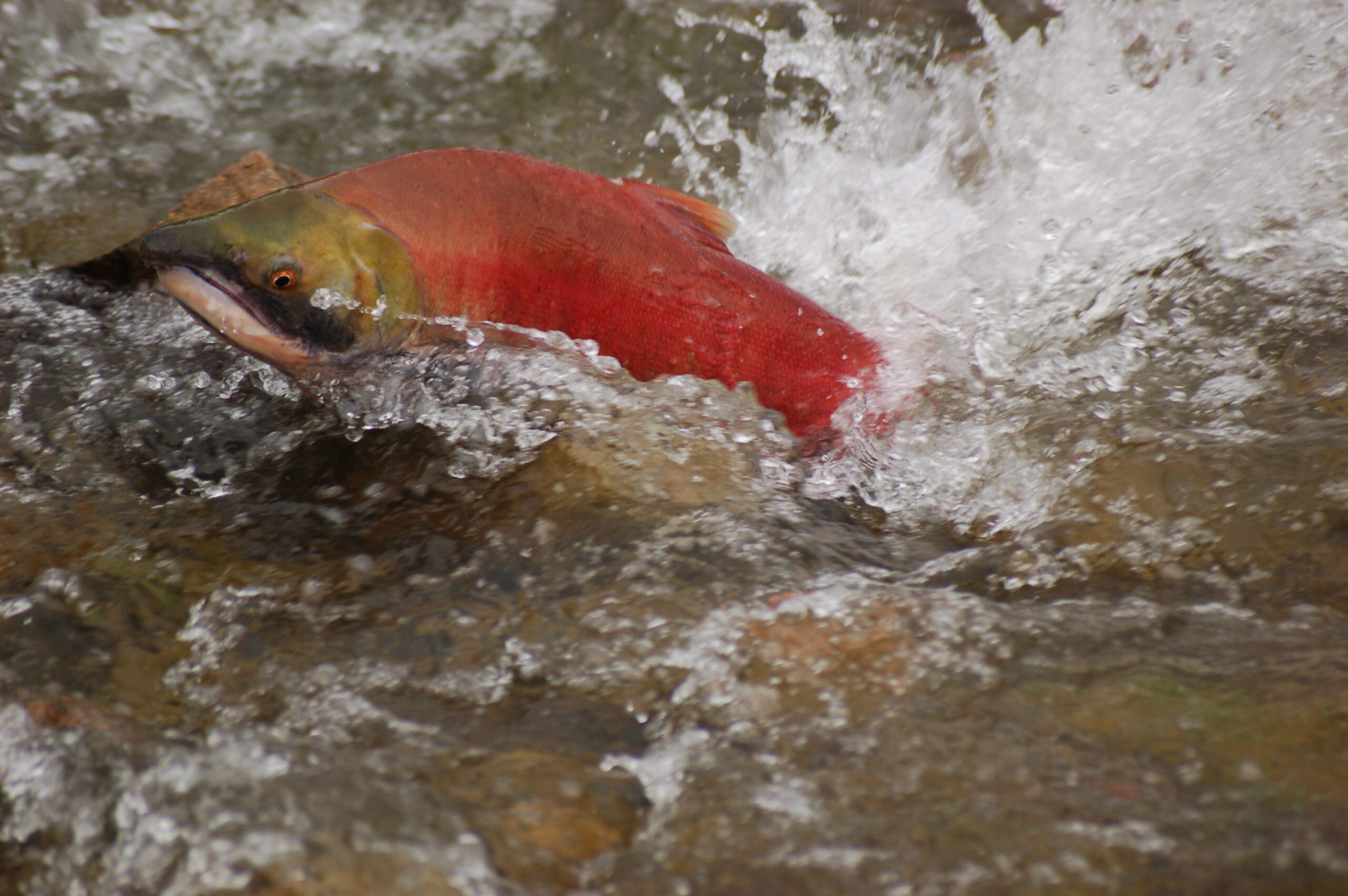After seven years of remediation work in Hazeltine Creek in response to the 2014 tailings dam breach, the salmon have returned to the creek to spawn. In stream work was completed in late August this year, just in time for the sockeye migration in the region.
In the early stages of the Mount Polley remediation effort, 40 thousand truckloads of rock were used to build a foundation channel along Hazeltine Creek from Polley Lake to Quesnel Lake. Next, section by section, the remediation team modified the initial channel and added sinuosity and habitat features to provide instream cover for fish, enhancing the habitat value. These features included spawning platforms, pools, riffles, rock boulder clusters, root wads, and logs.
The biological design for habitat features was developed collaboratively with Mount Polley’s technical experts, Williams Lake First Nation, Xatśūll First Nation, and at the regulatory level, with the Department of Fisheries and Oceans and the Ministry of Forests, Lands and Natural Resource Operations. Collectively the group is referred to as the “Habitat Remediation Working Group.”
Over the past few weeks over 100 sockeye salmon adults have returned to Hazeltine Creek to spawn. “The focus of the Hazeltine Creek remediation effort at Mount Polley has been to repair and rehabilitate Hazeltine Creek so that it becomes a self-sustaining, productive fish habitat.” said Brian Kynoch, President of Imperial Metals.
Trout have been using portions of the rehabilitated creek to spawn since 2017, and now another major milestone has been achieved with the return of sockeye salmon to the creek. The presence of the sockeye salmon and various other fish species signals that the remedial work has begun to restore ecological function. This is not only evident in the aquatic environment but also evident across the terrestrial landscape where plant communities are developing, and abundant wildlife is observed. It is expected that as both the aquatic and the terrestrial ecosystems mature, further ecological function will emerge, and the site will host an even broader array of organisms.
